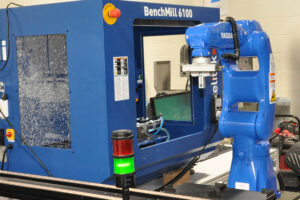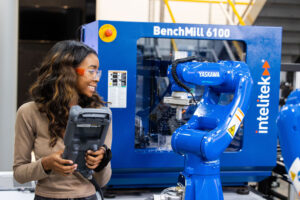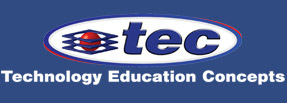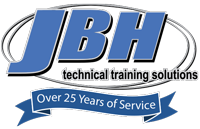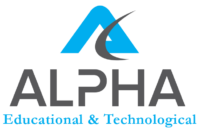By Ido Yerushalmi – Originally posted in eschoolnews

Education 4.0 can have a profound impact on how instructors teach real-world skills, but these five myths are still holding them back from fully leveraging this new age of instruction
In the industrial setting, Industry 4.0 is a term that analysts use to describe the automation and data exchange that are used in manufacturing technologies, and this involves modern concepts like the Internet of Things (IoT), cloud computing, and other innovations. Cumulatively, these technologies are changing the face of manufacturing.
Much like a manufacturing firm needs a flexible production line in order to adapt to changes in demand and customer preferences, education must also be tailor-made in a way that truly prepares students for success. In order to effectively implement Education 4.0, these five myths will have to be debunked:
Myth #1: Students are just “empty vessels.”
During the second industrial revolution, many believed that a student’s brain is similar to a piece of raw material that is assembled from scratch into a perfect product. In fact, the brain was referred to as an empty vessel, a blank slate that teachers poured knowledge into. We assumed that students lacked knowledge, and the teacher filled their brains with knowledge—building the same knowledge structure for all students (i.e., constructivism).
But this isn’t true. Students have prior knowledge that is accumulated differently by each student. Knowledge is not created like an assembly-line product. Students must be encouraged to experiment and take on real-world problem solving to create more knowledge and understanding for themselves and then to reflect on and talk about their activities.
Myth #2: Students are passive recipients of information.
Ten to 15 years ago, it wasn’t uncommon for a classroom of students to be sitting quietly, listening to a teacher lecture on a specific topic. Taking notes on that topic from a whiteboard or overhead projector, students were literally passive recipients of information (which they were later tested on).
In the Education 4.0 approach, the student transforms from being a passive recipient of information to an active participant in a personal learning process. Always guided by the teacher, students should construct their knowledge actively rather than just mechanically ingesting knowledge from the teacher or other online resources.
Myth #3: The definition of “basic knowledge” is the same as it always was.
There was once an approach that claimed that students should be given “basic knowledge” to use to build additional knowledge. The problem is that the definition of basic knowledge has never been updated and, as a result, is now irrelevant. Take math, for example. Elementary school students are still not allowed to use a calculator to work out simple sums, despite the fact that they all have access to calculators on their mobile devices.
Imagine taking this idea and extrapolating it into other areas. One example could be telling people they can’t use a cellular phone until they have used a landline for at least six years. It would be ridiculous, right? Well, the same goes for education: Education 4.0 realizes the basis for basic knowledge itself has changed.
Myth #4: Computers interfere with thinking.
Educational systems assume computers interfere with their ability to encourage thinking. The truth is, students do not need to be trained to solve derivatives and integrals because computers can be programmed to do it much more efficiently than any student ever could. Not having to calculate should be seen as a strength because it saves time that could be used during math classes to discuss the practical applications that math can solve.
Similarly, traveling by cars or planes saves time and allows people to explore more distant places on earth. After all, no one is suggesting that we walk or take boats now that we have trains and planes to use as more efficient and effective means of travel.
Myth #5: Learning is an individual exercise.
During most learning sessions, students were required to sit quietly in class, have no interaction with their peers, and listen to the single source of knowledge: the teacher. Because Education 4.0 involves collaboration with peers, guests, teachers, and administrators, the related environments foster discussion and teamwork.
By encouraging high levels of collaboration, open communication, and strong connections among students, teachers can more effectively prepare students for success in college, the workforce, and life as a whole.


